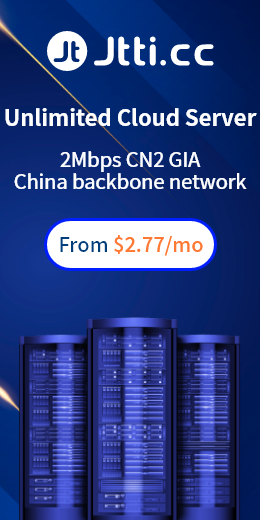Common cloud server automatic O&M tools include Docker, Puppet, Chef, Ansible, and SaltStack. These four types have their own advantages and different application scenarios. In the management and operation and maintenance of cloud servers, these automatic operation and maintenance tools can help us greatly simplify the operation process, improve work efficiency, and reduce errors. Let's take a look at what cloud platforms these automated operation and maintenance tools use and what specific operation and maintenance needs it!
Docker is a containerized platform that can quickly create, deploy, and manage containerized applications. Simplifies cross-platform application deployment and dependency management. It is widely used for microservices and distributed systems in development, test, and production environments. Such as application containerization, microservice deployment, development environment consistency management, etc. Docker is suitable for application environments that require lightweight and rapid deployment.
Puppet provides a comprehensive set of features and user interfaces that cover almost every operating system. The initial setup of Puppet is simple. You need to install the master server and client agent software. The command line interface is intuitive. You can download and install modules by running the Puppet command. Puppet Enterprise Edition has a web user interface. The managed nodes can be controlled in real time using prefabricated modules and recipes. The reporting tool has detailed change information to see how the agent software is performing. Puppet's disadvantage is that in addition to system administration skills, it also requires professional programming support, because it is built on Ruby.
Chef is a Ruby based configuration management tool that supports multiple operating systems and cloud platforms. Its concept is very good, including cookbook management and writing, node management, role and environment Settings. But in terms of implementation, there are security issues and the implementation of complex architectures. Chef can be used to define server configuration and application deployment, and it is highly scalable to customize resources and modules. It is often used for automated deployment and configuration management of complex applications. However, it is only suitable for highly customized operation and maintenance environments. The client of Chef can obtain all the information of the current environment, which also means that the security is facing a greater threat. The official code of Chef has also been modified by intruders, which also means that the security is not good.
Ansible focuses on being lean and fast, does not require an agent, can be connected and managed using SSH, authorises keys to communicate with nodes, performs the necessary tasks. . Is a Python based development, compatible with Git software library, can be cloned and installed on Ansible master server, easy to write and read YAML format configuration files. It is relatively simple to set up, and is suitable for rapid deployment and automation tasks, such as common server configuration management, application deployment, and task automation.
SaltStack executes tasks in parallel at high speed, supports the management of thousands of servers, and provides configuration management, remote execution, and cloud management functions. Automated response based on event drive. It can also support multiple operating systems and is easy to extend and maintain. SaltStack communicates and manages through the master-minion architecture, and provides a rich library of modules and functions to perform a variety of tasks. Suitable for environments that require massively parallel task execution and real-time event processing.
The above is the automated operation and maintenance tool shared by Jtti. Choosing the best operation tool depends on the specific needs of the project, the skills of the skill team, and the ease of use and security of the tool. Automated O&M tools help you automate multiple processes, from infrastructure configuration to application deployment to continuous monitoring and warning, to improve efficiency and reduce error rates.

 EN
EN
 CN
CN









